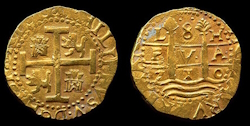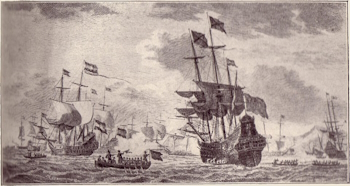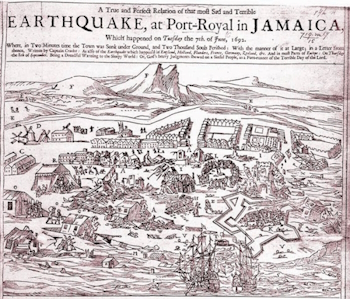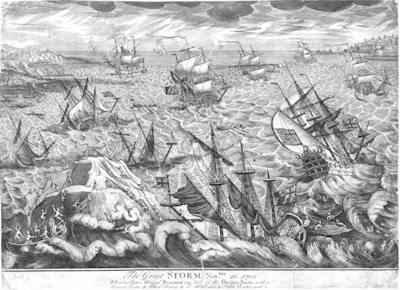 On 31st July 1715 a Spanish treasure fleet sank during a hurricane off the east coast of Florida. It was a catastrophe for the Spanish Crown, which was heavily relying on its cargo. The galleons were fully loaded with precious cargoes of gold, silver, jewellery, tobacco, spices, indigo, cochineal etc. The Spanish government was relying its the safe arrival, as the War of Spanish Succession, which had hindered the sailing of the treasure fleets, had just come to an end. For obvious reasons, this disaster awoke the interest of pirates, privateers, and honest seamen alike.
On 31st July 1715 a Spanish treasure fleet sank during a hurricane off the east coast of Florida. It was a catastrophe for the Spanish Crown, which was heavily relying on its cargo. The galleons were fully loaded with precious cargoes of gold, silver, jewellery, tobacco, spices, indigo, cochineal etc. The Spanish government was relying its the safe arrival, as the War of Spanish Succession, which had hindered the sailing of the treasure fleets, had just come to an end. For obvious reasons, this disaster awoke the interest of pirates, privateers, and honest seamen alike.
The Spanish treasure fleets
 Treasure fleets consisting of a dozen or more ships used to sail from Cádiz or Seville in Spain, bringing European goods not readily available in the New World to the colonies with the aim of returning with gold, silver and other goods from Peru and Colombia, as well as spices and other items from south east Asia, brought across the Pacific by the Manila Galleon, which was then transported by mule train across the isthmus of Panama.…
Treasure fleets consisting of a dozen or more ships used to sail from Cádiz or Seville in Spain, bringing European goods not readily available in the New World to the colonies with the aim of returning with gold, silver and other goods from Peru and Colombia, as well as spices and other items from south east Asia, brought across the Pacific by the Manila Galleon, which was then transported by mule train across the isthmus of Panama.…

 In 1692, Port Royal was the main British base in Caribbean, which had been captured from the Spanish in 1655. The town became a thriving centre of trade and privateering, but by 1692 the focus had shifted to the cultivation of tobacco and sugar cane with an increased growth in the slave trade. Port Royal was built on a peninsula off the coast of Jamaica across from present-day Kingston and was religiously and culturally very diverse. At its height in 1692, the population of the town is estimated to have exceeded 6500 inhabitants, of which about 2500 were slaves.…
In 1692, Port Royal was the main British base in Caribbean, which had been captured from the Spanish in 1655. The town became a thriving centre of trade and privateering, but by 1692 the focus had shifted to the cultivation of tobacco and sugar cane with an increased growth in the slave trade. Port Royal was built on a peninsula off the coast of Jamaica across from present-day Kingston and was religiously and culturally very diverse. At its height in 1692, the population of the town is estimated to have exceeded 6500 inhabitants, of which about 2500 were slaves.… The Great Storm, a force two hurricane with wind speeds of up to 95 miles per hour, hit the south of England and Wales on 26th November 1703, the strong winds finally abating on 28th November. The Church of England declared that the storm was God’s retribution for the sins of the nation and it couldn’t have hit at a worse time. That year saw the greatest concentration of both naval and merchant shipping on the British coast to that date. Due to
The Great Storm, a force two hurricane with wind speeds of up to 95 miles per hour, hit the south of England and Wales on 26th November 1703, the strong winds finally abating on 28th November. The Church of England declared that the storm was God’s retribution for the sins of the nation and it couldn’t have hit at a worse time. That year saw the greatest concentration of both naval and merchant shipping on the British coast to that date. Due to